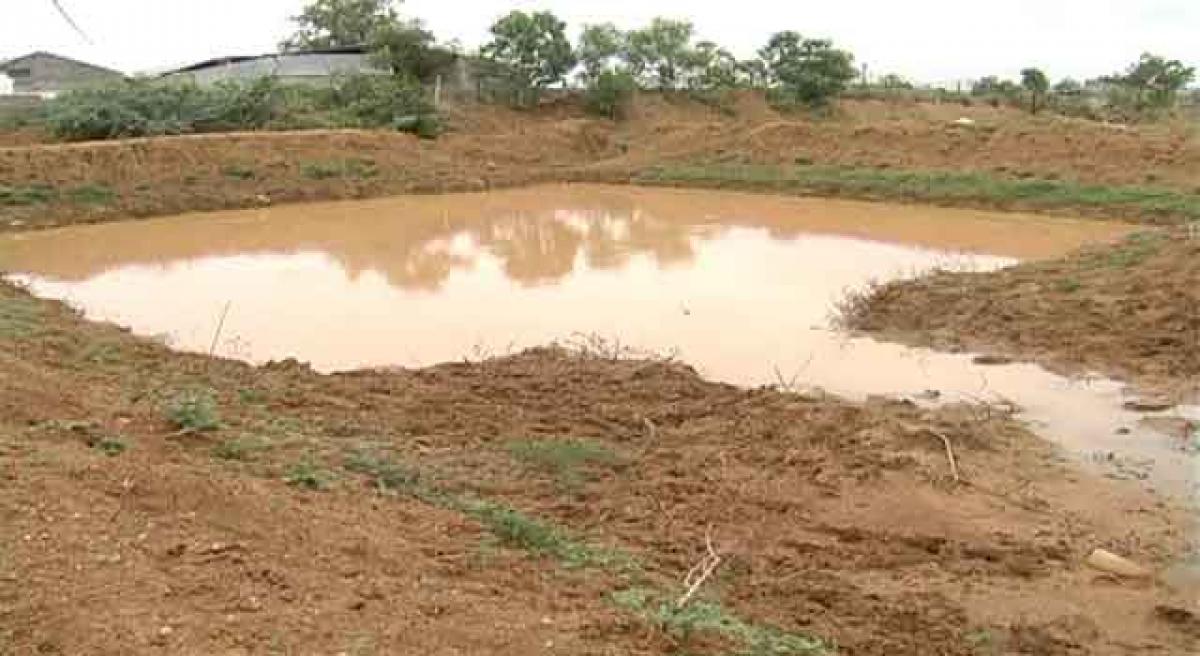Recharge pits to bring up groundwater

Nabard officials in the district have been successfully recharging agriculture and bore wells with the help of digging recharge pits, which are more or less similar to rainwater harvesting structures, near the wells.
Karimnagar: Nabard officials in the district have been successfully recharging agriculture and bore wells with the help of digging recharge pits, which are more or less similar to rainwater harvesting structures, near the wells.
According to a conservative estimate, there are over three lakh bore wells and four lakh farm wells in the district. Half of them have gone dry because of severe drought. As the Nabard officials are ready to get them revived, the District Collector is gearing up to include the recharge pit works under the NREGS.
The farmers have taken interest in the activity as the Nabard officials assured them loans from banks. The farmers feel that it is a lot better to spend a few thousands of rupees to get the wells recharged instead of going for another bore well, which is a costly affair.
The Nabard has evinced interest to implement the recharge pits in other parts of the district as digging pits in dry land areas proved productive. In fact, the Nabard officials introduced the project in 2014, but farmers did not evince interest in it. Recently, during awareness programmes that the Nabard conducted the farmers demonstrated good response.
In fact, over 60 per cent of farmers in the district are dependent on groundwater for irrigation needs. As the groundwater table receded, they have been encountering a tough time. The awareness programmes on recharging farm and bore wells proved beneficial to the farmers. The Nabard kicked off the programme in villages at a time the farmers are reeling under severe drought impact.
They have been reviving the farm and bore wells by recharging them. The water reaching the recharge pits on account of rain, albeit small, is helping the dried wells and bore wells recharge quickly. A pit measuring 10 or 20 feet long with an equal width should be dug. It should have a depth of at least seven feet.
Up to a height of six feet the pit should be filled with big rocks and it should be layered with 60mm metal stones. On the above, a nylon mesh should be put before covering the pit with sand up to a height of two or three feet.
Rainwater from the catchment area of about 10 acres should be diverted into the pit through diversion canals. Mud reaching the pit along with rainwater should be cleaned from time to time. If this process does not work, the recharge pit should be built all around the bore well or agriculture well instead of building it very close to the wells.
Prior to building the recharge pit, the well or bore well should be tested whether it is conducive for recharging or not. To test it, the well or bore well should be filled with 4,000-5,000 litres of water. The water should be fully absorbed into the soil in the stipulated time. Then only the well is fit enough to recharge.
By: Ch Gopalakrishna














